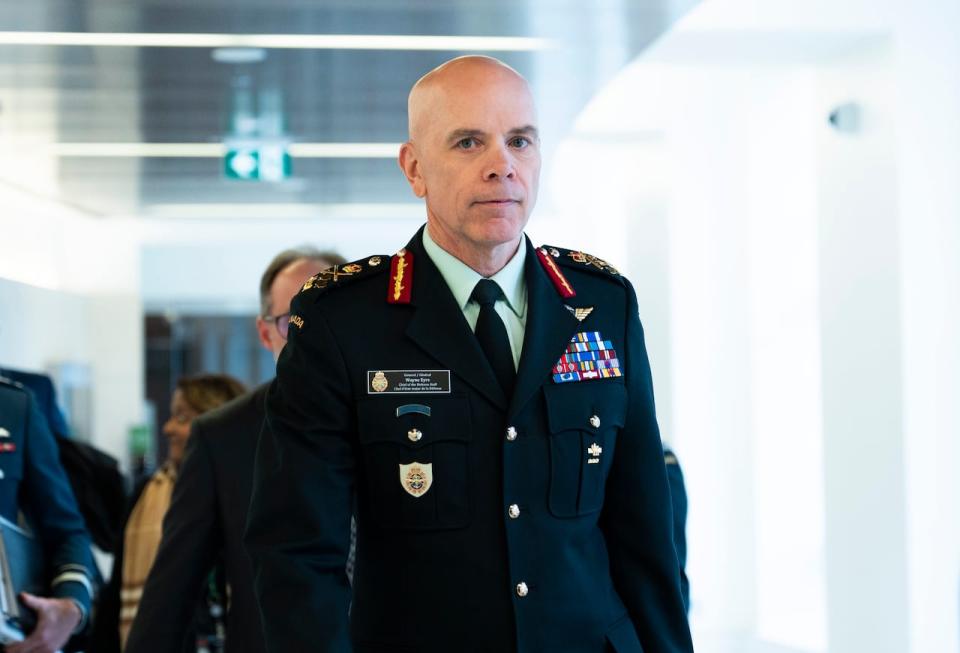Even if Canada reaches its defence spending targets by the end of the decade, it would still be "$6 billion to $7 billion" short of NATO's two per cent of GDP benchmark for member nations, says Defence Minister Bill Blair.
The federal government's new national defence strategy, released Monday, pledged an increase in military spendingof $8.1 billion over the next five years —which would move the needle on the country's investment in defence from 1.33 per cent of the gross domestic product to 1.76 per cent.
Appearingbefore the Senate committee on national security and defence late Monday, Blair described the new policy as a plan to put "in place the conditions to achieve the two per cent" — an alliance target originally agreed to by the former Conservative government in 2014 and reaffirmed by the Liberals last year.
Both Blair and Prime Minister Justin Trudeau have hinted there are more defence investments to come. The minister told senators those plans could "easily move us into that two per cent threshold."
NATO allies have been demanding that member countries come up with concrete plans to reach the goal.
Blair told senators he asked his department how far the additional funds would leave the defence budget from reaching NATO's target and was told to expect an annual gap of$6 billion to $7 billion. Much, he said, will depend upon the performance of the Canadian economy into the early 2030s.
The investment numbers are not the only major hurdle the new policy has to get past.
The Trudeau government has promised a renewed focus on addressing the shortfall in military personnel, which Blair has estimated at 16,500 members,both regular and reserve force.
The new strategy doesn't foresee the military returning to its authorized strength of 71,500 full-time members, 30,000 reservists and 5,200 Rangers until 2032.
But to meet the growing demands of overseas operations and domestic emergency response, the country's top military commander has suggested the Armed Forces should addat least 14,000 members to its full-strength complement.
"We decided that we will deal with the 16,500 deficit first," Blair told senators.
"When we close that gap — frankly, I think we can demonstrate that to onboard additional people — then I'm quite confident I can go back to the government and say, 'We've solved this problem now. We're on track. We can have the people we need.' And we'll ask for more money to onboard additional people."
Eyre 'cautiously optimistic' on recruitment
Chief of the Defence Staff Gen. Wayne Eyre said the latest numbers suggest that the military's regular force may have turned the corner and is expected to have grown by 214 members as of the end of February.
"Likewise, the reserve force has grown by several hundred as well," Eyre told the Senate hearing. "We are entering this fiscal year with more recruits in the processing pipeline than we have for the last three. February had the greatest number of monthly applicants in the last five years."
ChiefoftheDefenceStaff Gen. Wayne Eyre arrives to appear as a witness at the Standing Committee on National Defence in Ottawa on Tuesday, March 7, 2023. (Justin Tang/CP)
Eyre said he's "cautiously optimistic."
The defence policy proposes a series of measures to fix the glacial pace of recruiting, including the introduction of a probationary period which would allow the military to enrol new members faster.
The federal government opened the door several months ago to allowing permanent residents to apply to join the Armed Forces. More than 21,000 applied but less than 100 had been accepted by early this year.
One of the major concerns for the Department of National Defence is that many foreign-born applicants must pass enhanced security screening.
"This is not a military problem. This is a Government of Canada problem," Eyre said.
Eyre told the committee a new information-sharing agreement between the immigration and defence departments should accelerate the process of obtaining security clearances. The defence department also signed a contract last week for new security software because the old program was "falling apart," he said.
In a recent speech, Blair openly stated that the recruiting crisis was putting the military into a "death spiral."
Defence expert Dave Perry, president of the Canadian Global Affairs Institute, said warnings about recruitmenthave been echoing loudly since the pandemic and the issue was considered a major priority in the last defence policy seven years ago.
He said he sees no sign of a sense of urgency, given that the policy doesn't predict a resolution to the recruitment crisis until 2032.
"They're not anticipating they will be back to their authorized strength,the numbers they're supposed to be at today,for another eight years," said Perry, whose organization has hosted conferences that are occasionally sponsored by defence contractors.
"I think it's a patently, ridiculously slow time frame."
He said the defence department needs to "fundamentally start doing things differently to get back" to where it needs to be.

